Chimpanzee Diet
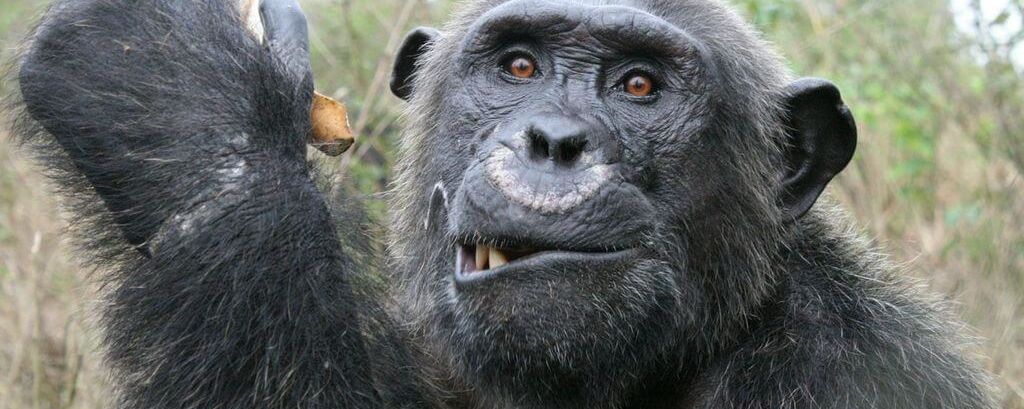
Chimpanzees are omnivores, meaning they eat both plants and animals.
In fact, Dr. Jane Goodall was the first person to observe chimpanzees eating other animals when she saw them using sticks to extract termites and also hunting smaller mammals such as monkeys. Until then, chimpanzees were believed to be herbivores, like other great apes.
While most of a chimpanzee’s diet is made up of fruits, seeds, nuts, leaves, flowers and insects, they can be surprisingly creative with tool use and sourcing medicinal – and recreational – sources of food.
Check out this top ten list to find out what, and how, chimpanzees eat.
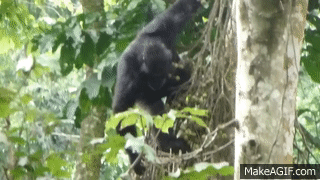
1. Figs
Aside from being nutritious and delicious, figs account for almost half of a chimpanzee’s diet, providing an excellent source of energy.
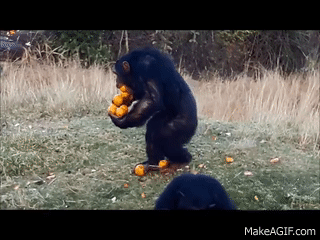
2. Fruit
Chimpanzees eat a wide variety of fruits including mangoes, bananas, watermelons and apples. However, unlike humans, chimpanzees can’t import out-of-season fruit, so they are stuck with whatever is in season in the region where they live.
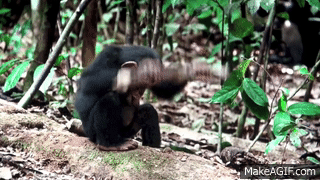
3. Nuts & Seeds
The most common type of nut chimpanzees eat is the oil palm nut. But they are also known to eat kola and panda nuts. It’s easy to tell if a chimpanzee is eating kola or panda nuts. The shells are so tough that the only way to crack them is to whack the nuts with a hard stone.
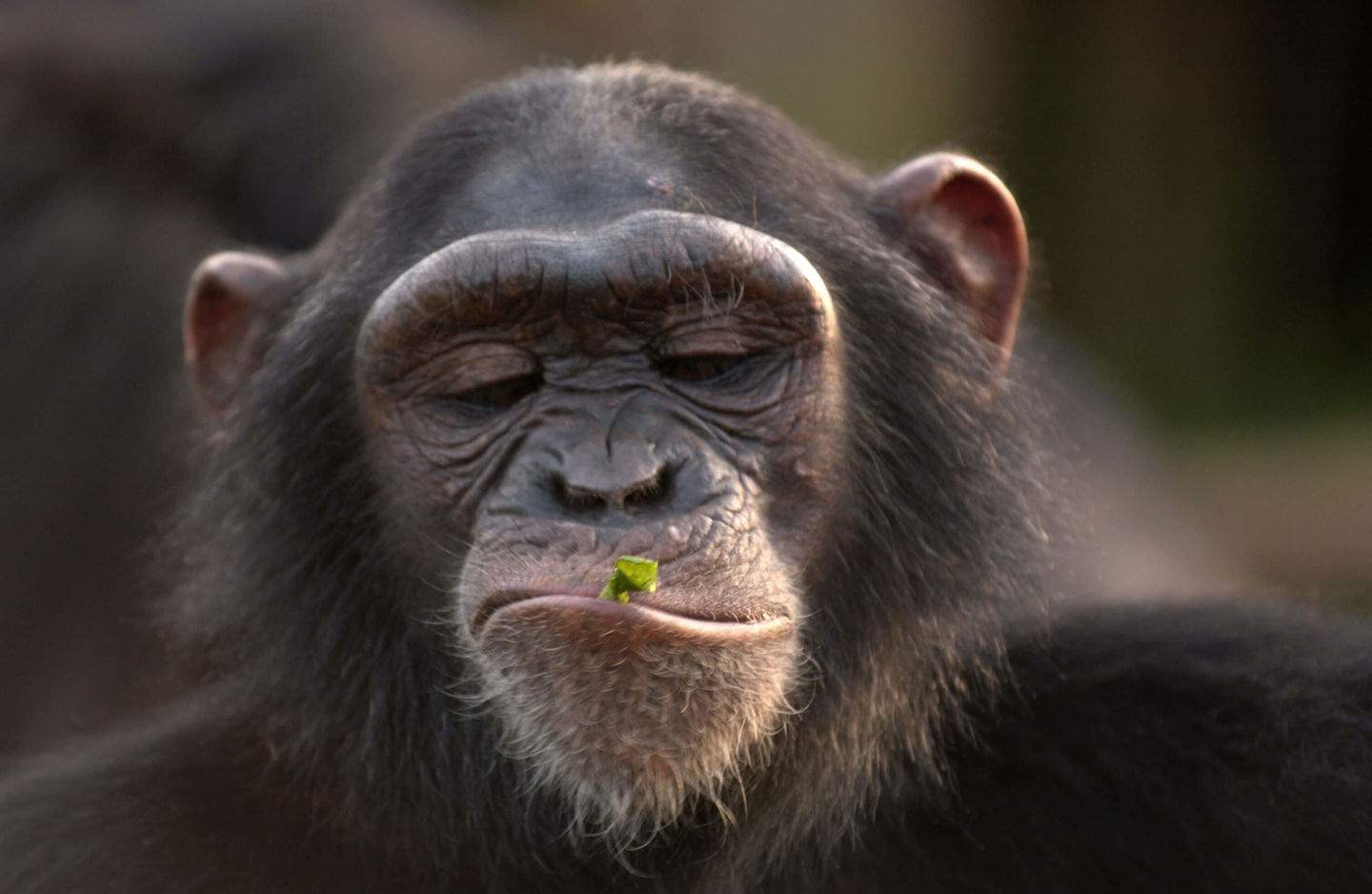
4. Blossoms & Leaves
When fruit is in short supply, chimpanzees will eat various types of leaves, flowers, tree bark and seeds. However, they prefer fruit.
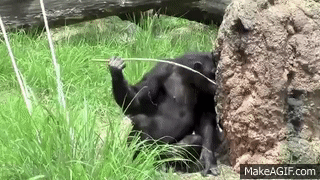
5. Insects
Insects (ants, termites) account for approximately 4% of a wild chimpanzee’s diet. In fact, one of Dr. Goodall’s most important discoveries was made while observing chimpanzees foraging for termites. In 1960, at Gombe National Park, Jane observed two chimpanzees using small twigs as tools to fish for termites in the ground, which they then swept into their mouths as a snack — Yum!
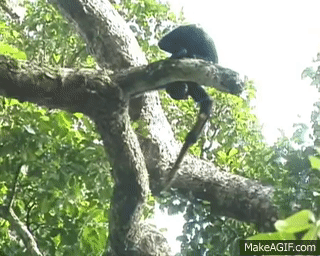
6. Honey
Chimpanzees adore honey and have developed sophisticated ways of accessing it, using sticks to dip into or force open nests. But if you’re really desperate for honey, you can always bash the hive open with a large stick.
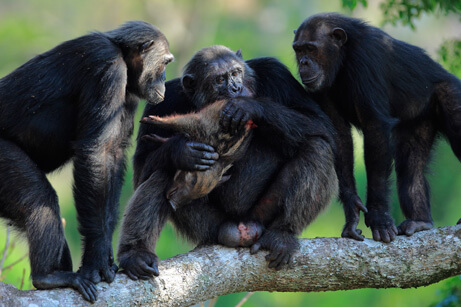
7. Meat and Eggs
One of the earliest and most significant discoveries made by Jane Goodall was that chimpanzees hunt for and eat meat. Prior to this, chimpanzees were believed to be vegetarians. However, meat and other animal products only account for 5%-8% of a chimpanzee’s diet. Interestingly, successful hunters typically share some portion of their kill with other group members in response to a variety of begging behaviours.
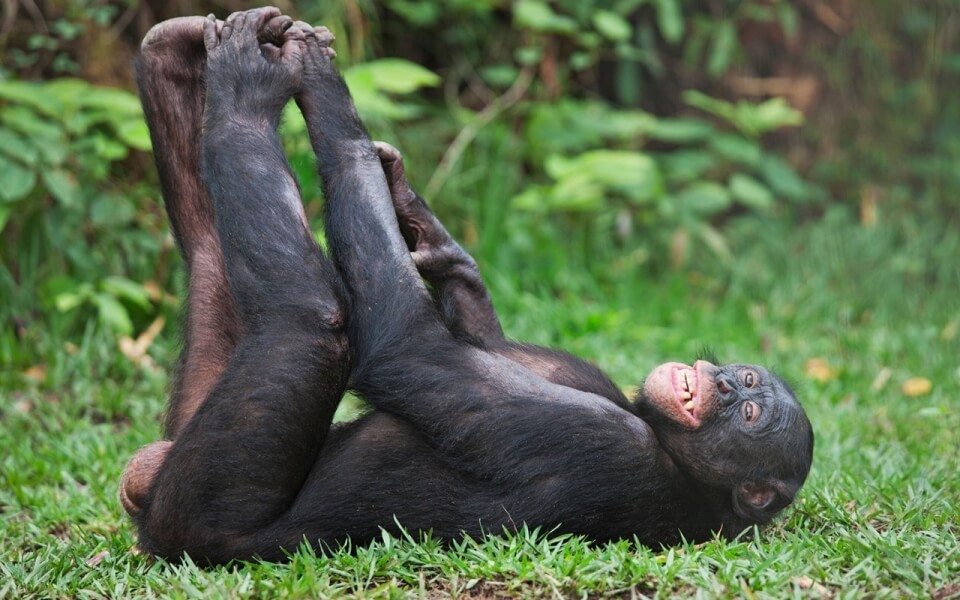
8. Palm Wine
Scientists in Guinea, West Africa recently noticed wild chimpanzees drinking palm wine – creating drinking vessels out of leaves. The raffia palms that grow around Bossou, Guinea contain natural sugars that rapidly ferment in the tropical heat, creating a sweet, mildly alcoholic beverage that both humans and chimpanzees seem to enjoy.
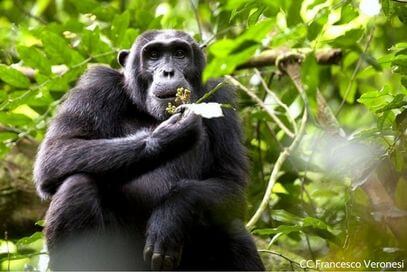
9. Medicinal Plants
Chimpanzees intuitively know the medicinal value of various plants. In Gombe Stream National Park, chimpanzees have been observed eating Aspilia mossambicensis – a plant that helps rid their digestive system of parasites. Chimpanzees have also been observed eating: soil (which contains anti-malaria minerals) elm bark (which fights bacterial infections), cordia flower stems (which reduces the risk of tuberculosis), and unripe figs (which have de-worming properties).
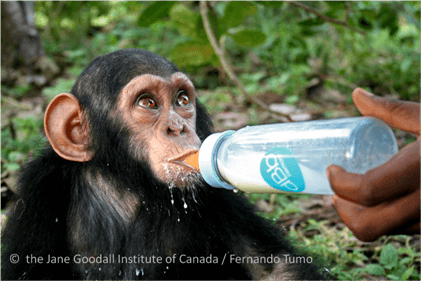
10. Milk
Infant chimpanzees feed on their mother's milk.
At Tchimpounga Sanctuary, infant chimpanzees are fed specially formulated milk until they are ready to eat solid food. Infant chimpanzees nurse for at least five years and stay with their mothers even longer, learning to care for their younger siblings. Orphaned chimpanzees are often malnourished and in urgent need of nutrition and care.
The nearly 160 chimpanzees living at the Tchimpounga sanctuary consume 17,000 kilos of food every month. That’s a lot of figs!